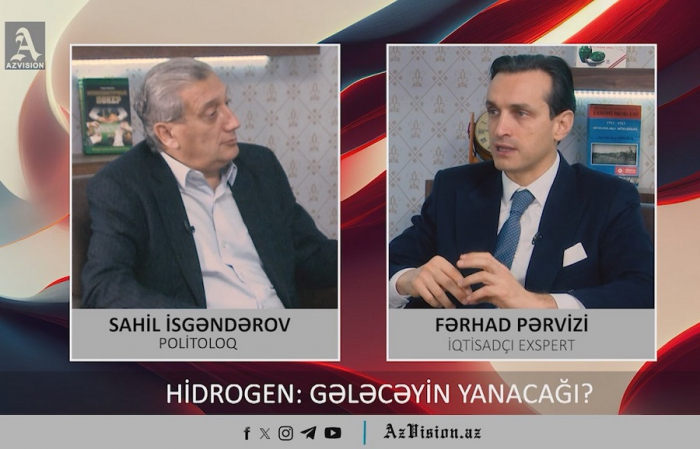He points out that Azerbaijan has sufficient potential to transform into a hydrogen energy producer to both cover its domestic consumption and export it to foreign markets. We have even made the first steps towards the goal.
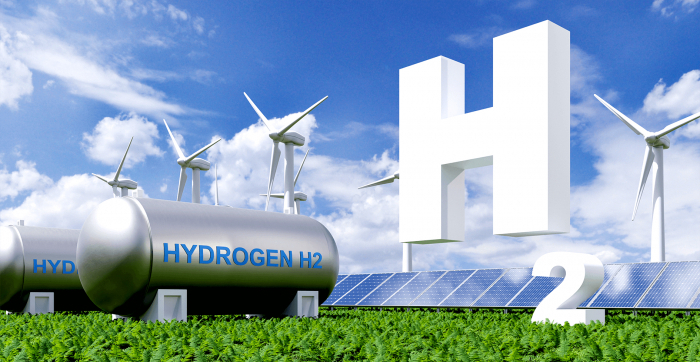
The expert explains that there are 11 types of hydrogen fuel, ranging from black to green. Black hydrogen is produced through separating carbon and hydrogen in coal, thus releasing the carbon, but storing the hydrogen. There are also brown, blue and other colours of such energy, while green is considered the cleanest of them all.
Green hydrogen is made through using green energy sources such as wind and solar when water molecules are split into hydrogen and oxygen. While it is an expensive process, it is more environmentally friendly and produceslow to zero carbon emissions.
The most common type of hydrogen currently is the blue one, obtained through natural gas. The carbon and hydrogen molecules in gas are split, but carbon emissions are not released into the air but sequestered (stored in the ground). Hydrogen energy has been used before, the most popular one being the black type, obtained from coal.
- Where is hydrogen mainly used?
‘In transportation, but hybrid cars that run on electricity have more potential than hydrogen-powered vehicles. Japan’s Toyota and some companies in Germany are trying to produce hydrogen-powered engines. Meanwhile, hydrogen is regarded more suitable for seafaring and aviation as hydrogen production, transportation and storing are rather costly. There are fewer air and seaports, while they boast large territories where hydrogen can easily be stored. Aircrafts, vessels and tankers consume more fuel, justifying being powered by hydrogen.’
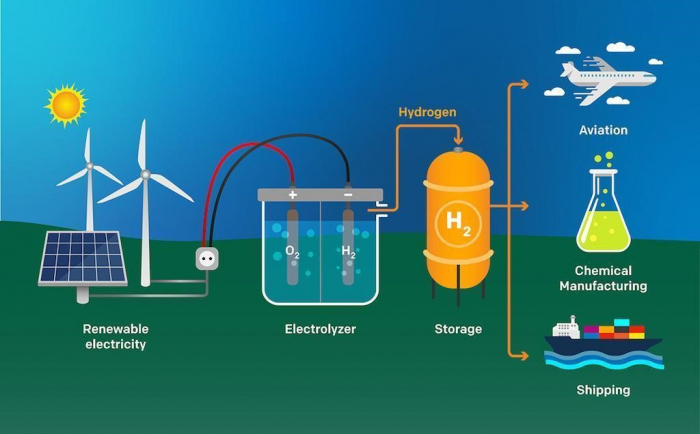
- Traditional producers, including Azerbaijan, are shifting towards the green energy agenda. What is Azerbaijan’s potential to become a hydrogen producer? Do we need to build factories or special facilities?
‘We have the potential and prospects. Azerbaijan is a natural gas exporter, and we can easily produce blue hydrogen. We have promising projects on green energy – solar and wind. At the same time, I see two fundamental challenges. Firstly, our gas is almost completely sold, and we have no spare resources. If we set to produce blue hydrogen, we need to find a source of natural gas for it.
The second is the transportation. Hydrogen can be shipped in several ways. It can be compressed and transported in tankers and trains. But Azerbaijan does not have access to a large sea and trains are not efficient. The only feasible way is to deliver it through a pipeline.
We have the large ‘Southern Gas Corridor’ pipeline, but it is full. The hydrogen could be mixed with gas before being shipped but the Southern Corridor is operating at full capacity. Azerbaijan has made commitments to Europe, and we now need to increase our gas exports. Therefore, even if we do produce hydrogen, the ways of transporting it remainquestionable.’
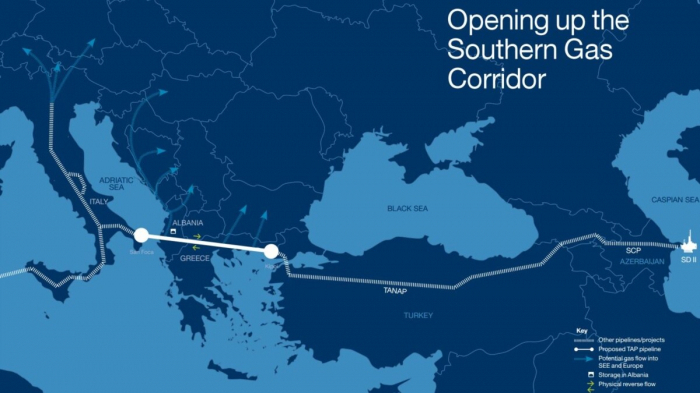
- Europe has announced a full transition to green energy by 2030. Can the sides, by then, reach an agreement to ship the same gas, now converted to blue hydrogen, to Europe?
‘Both of us can. Europe can even acquire natural gas from us and produce blue hydrogen independently. Azerbaijan adopted the Hydrogen Strategy back in August. I believe the steps to be taken on these technicalities have all been provided for in that document.’
- Do we need to build any facilities or factories to launch production?
‘We have an ethanol plant, which will deliver the composites necessary to produce hydrogen. But naturally we must build new plants and infrastructure. This is no easy feat. Everything depends on whether Azerbaijan focuses on green or blue hydrogen. We have a water shortage problem. Should we choose the green route, pyrolysis (thermal decomposition) of water may reduce our water resources. If we go after gas-generated hydrogen, we do not have spare volumes. We have obligations under both domestic and foreign contracts. We need to find ways of addressing these problems.’
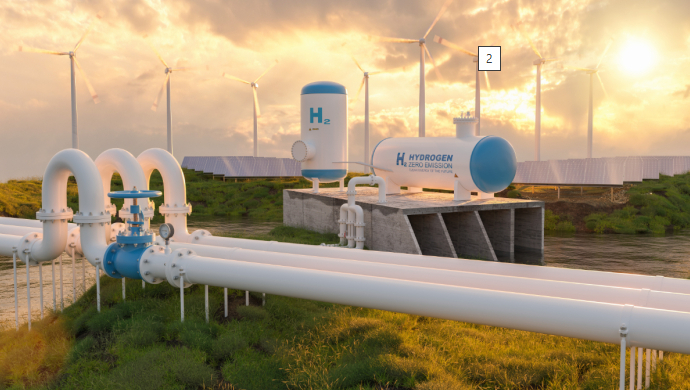
- You said, hydrogen can be transferred through existing gas pipelines. It can even be mixed with natural gas. How does this happen and is there an established practice in the world?
‘Pipelines are the most efficient and cheapest means of transportation, including hydrogen energy. Hydrogen is a gas, which can be liquefied and loaded into tankers cisterns. Still, pipelines are the most cost-effective choice.
We’ve seen a practice of hydrogen transported separately, not mixed with natural gas, through a pipeline: they first transfer gas, followed by hydrogen, and resume the transportation of gas.’
- Does that mean Azerbaijan can produce blue hydrogen and transport it to Europe through existing pipelines?
‘Europe is our largest market. Our aviation and seafaring fields are not large to create a domestic demand for hydrogen. Hydrogen is an expensive fuel that can be a viable option for wealthier Europe and financially booming countries, ready to make a switch to green energy.’
- You mentioned that economically developed countries have their own hydrogen production. Can Azerbaijan join the competition? After all, European countries can acquire Azerbaijani gas and use it for hydrogen production.
‘Let’s not forget that producing hydrogen is not their sole reason for acquiring natural gas. People need to burn something in their homes to cook food and heat their houses. All infrastructure in Europe is built on gas. Hydrogen consumption may be viable for logistics, providing for a shift to green energy in transportation. Both gas and hydrogen are important to Europe. They do not have cheap gas to produce cost-effective blue hydrogen, therefore they are focused on the production of green one through hydrolysis using renewable energy sources.
There are great prospects for wind generation in the Azerbaijani part of the Caspian Sea to produce green hydrogen, which was also mentioned in the World Bank’s report this year. We’ve already launched projects on solar energy prospects, which are prioritizing covering domestic consumption. The gas released during wind and solar energy production is also planned to be delivered to Europe.
We want to become more attractive for investments and financial resources by cutting down our own domestic gas consumption and selling it to Europe at a high price. We can become competitive, but it requires large investments and long-term contracts. Europe has only just started the transition; Germany is building hydrogen stations. It will take many years to develop the field.
AzVision.az
More about:








